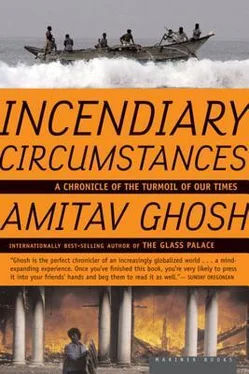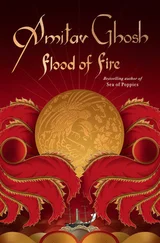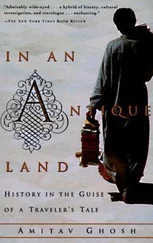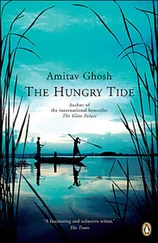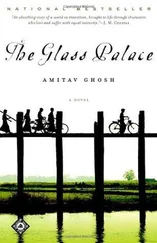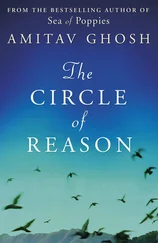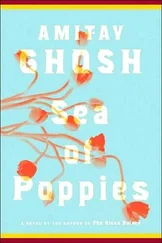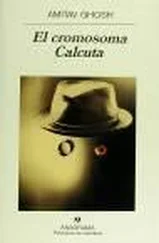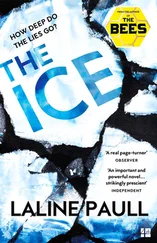Chea Samy made a respectful gesture at a picture on the wall behind her, and I looked up to find myself transfixed by Luk Khun Meak's stern, frowning gaze. "She was killed by Pol Pot," said Chea Samy, using the generic phrase with which Cambodians refer to the deaths of that time. The distinguished old dancer, mistress of King Monivong, died of starvation after the revolution. One of her daughters was apprehended by the Khmer Rouge while trying to buy rice with a little bit of gold. Her breasts were sliced off and she was left to bleed to death.
"What was Pol Pot like as a boy?" I asked, inevitably.
Chea Samy hesitated for a moment. It was easy to see that she had often been asked the question before and had thought about it at some length. "He was a very good boy," she said at last, emphatically. "In all the years he lived with me, he never gave me any trouble at all."
Then, with a despairing gesture, she said, "I have been married to his brother for fifty years now, and I can tell you that my husband is a good man, a kind man. He doesn't drink, doesn't smoke, has never made trouble between friends, never hit his nephews, never made difficulties for his children…"
She gave up; her hands flipped over in a flutter of bewilderment and fell limp into her lap.
The young Saloth Sar's palace connections ensured places for him at some of the country's better-known schools. Then, in 1949, he was awarded a scholarship to study electronics in Paris. When he returned to Cambodia three years later, he began working in secret for the Indochina Communist Party. Neither Chea Samy nor her husband saw much of him, and he told them very little of what he was doing. Then, in 1963, he disappeared; they learned later that he had fled into the jungle along with several well-known leftists and Communists. That was the last they heard of Saloth Sar.
In 1975, when the Khmer Rouge seized power, Chea Samy and her husband were evacuated like everyone else. They were sent off to a village of "old people," longtime Khmer Rouge sympathizers, and along with all the other "new people" were made to work in the rice fields. For the next couple of years there was a complete news blackout and they knew nothing of what had happened and who had come to power: it was a part of the Khmer Rouge's mechanics of terror to deprive the population of knowledge. They first began to hear the words "Pol Pot" in 1978, when the regime tried to create a personality cult around its leader in an attempt to stave off imminent collapse.
Chea Samy was working in a communal kitchen at the time, cooking and washing dishes. Late that year some party workers stuck a poster on the walls of the kitchen: they said it was a picture of their leader, Pol Pot. She knew who it was the moment she set eyes on the picture.
That was how she discovered that the leader of Angkar, the terrifying, inscrutable "Organization" that ruled over their lives, was none other than little Saloth Sar.
4
A few months later, in January 1979, the Vietnamese "broke" Cambodia, as the Khmer phrase has it, and the regime collapsed. Shortly afterward Chea Samy and her husband, like all the other evacuees, began to drift out of the villages they had been imprisoned in. Carrying nothing but a few cupfuls of dry rice, barefoot, half starved, and dressed in rags, they began to find their way back toward the places they had once known, where they had once had friends and relatives.
Walking down the dusty country roads, encountering others like themselves, the bands of "new people" slowly began to rediscover the exhilaration of speech. For more than three years now they had not been able to say a word to anyone with confidence, not even their own children. Many of them had reinvented their lives in order to protect themselves from the obsessive biographical curiosity of Angkar's cadres. Now, talking on the roads, they slowly began to shed their assumed personae; they began to mine their memories for information about the people they had met and heard of over the past few years, the names of the living and the dead.
It was the strangest of times.
The American Quaker Eva Mysliwiec arrived in the country in 1981; she was one of the first foreign relief workers to come to Cambodia and is now a legend in Phnom Penh. Some of her most vivid memories of that period are of the volcanic outbursts of speech that erupted everywhere at unexpected moments. Friends and acquaintances would suddenly begin to describe what they had lived through and seen, what had happened to them and their families and how they had managed to survive. Often people would wake up in the morning looking worse than they had the night before: they would see things in their dreams, all those things they had tried to put out of their minds when they were happening because they would have gone mad if they'd stopped to think about them — a brother called away in the dark, an infant battered against a tree, children starving to death. When you saw them in the morning and asked what had happened at night, what was the matter, they would make a circular gesture, as though the past had been unfolding before them like a turning reel, and they would say simply, "Camera."
Eventually, after weeks of wandering, Chea Samy and her husband reached the western outskirts of Phnom Penh. There, one day, entirely by accident, she ran into a girl who had studied dance with her before the revolution. The girl cried, "Teacher! Where have you been? They've been looking for you everywhere."
There was no real administration in those days. Many of the resistance leaders who had come back to Cambodia with the Vietnamese had never held administrative positions before; for the most part they were breakaway members of the Khmer Rouge who had been opposed to the policies of Pol Pot and his group. They had to learn on the job when they returned, and for a long time there was nothing like a real government in Cambodia. The country was like a shattered slate: before you could think of drawing lines on it, you had to find the pieces and fit them together.
But already the fledgling Ministry of Culture had launched an effort to locate the classical dancers and teachers who had survived. Its officials were overjoyed to find Chea Samy. They quickly arranged for her to travel through the country to look for other teachers and for young people with talent and potential.
"It was very difficult," said Chea Samy. "I did not know where to go, where to start. Most of the teachers had been killed or maimed, and the others were in no state to begin teaching again. Anyway, there was no one to teach. So many of the children were orphans, half starved. They had no idea of dance — they had never seen Khmer dance. It seemed impossible; there was no place to begin."
Her voice was quiet and matter-of-fact, but there was a quality of muted exhilaration in it too. I recognized that note at once, for I had heard it before: in Molyka's voice, for example, when she spoke of the first years after the Pol Pot time, when slowly, patiently, she had picked through the rubble around her, building a life for herself and her family. I was to hear it again and again in Cambodia, most often in the voices of women. They had lived through an experience very nearly unique in human history: they had found themselves adrift in the ruins of a society that had collapsed into a formless heap, with its scaffolding systematically dismantled, picked apart with the tools of a murderously rational form of social science. At a time when there was widespread fear and uncertainty about the intentions of the Vietnamese, they had had to start from the beginning, literally, like rag pickers, piecing their families, their homes, their lives together from the little that was left.
Like everyone around her, Chea Samy too had started all over again — at the age of sixty, with her health shattered by the years of famine and hard labor. Working with quiet, dogged persistence, she and a handful of other dancers and musicians slowly brought together a ragged, half-starved bunch of orphans and castaways, and with the discipline of their long, rigorous years of training they began to resurrect the art that Princess Soumphady and Luk Khun Meak had passed on to them in that long-ago world when King Sisowath reigned. Out of the ruins around them they began to forge the means of denying Pol Pot his victory.
Читать дальше
